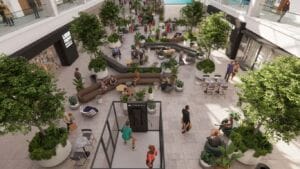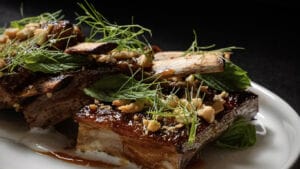Everyone wants to be noticed for being an original. When it comes to interior design, homeowners want to put their own twist on classic designs to show their personality, enhance certain features in a room or simply to add some color to a space. Now, people are starting to put their home efforts towards adding texture to their tile.
For years, traditional flat, colored tile covered bathrooms and kitchens everywhere but not anymore. Without notice, textured tile appeared for the masses to make a statement. Kitchen designer Amber Carfield of Kitchens by Good Guys said, “It creates a really cool interest for the kitchen.”

Consumers have a lot of choices when it comes to these new tiles; they can follow a traditional or modernized style. Carfield mentioned the big popularity of geometric shapes that follow a more modern look, but 3D textured tile can also come with designs that have softer edges such as ripple waves. Either style is achievable with this new trend, and it can add a personality to the room being designed.
3D textured tile creates a high-end expensive look that draws attention. It traditionally sells for $8 to $15 per square foot, but the price can go well past $50 per square foot. The tile is more often than not sold in large format tiles typically 12 by 24 inches. This allows for a cleaner look because there are fewer grout lines showing.
When designing with 3D tile, remember that moderation is key. “It can get a little overwhelming if there is too much of it,” Carfield said. She suggested using 3D tile for focal areas in the kitchen such as around the hood above the stove.
As the tile becomes more popular, it is moving from the kitchen and into other parts of the house. Many designers use it to spice up the bathroom in the shower or the traditional backsplash; some have also even implemented the tile into a bedroom as an accent wall.
The more modern-looking tile is moving the design world into a very interesting area. Carfield believes that more modern trends will arise with time, but more than that, a special blend of styles is being created through the newer design trends. “You might have modern elements and really rustic traditional elements in the same room,” she said. It opens up a realm of possibilities for those in the design world as they can experiment with merging and blending modern and traditional elements.
Although it’s hard to predict the longevity of a trend, Carfield guessed that this current trend will probably be around for at least five years before it is seen becoming less exclusive. For now it remains a hot-button item for those looking to add a little spice to their home.



